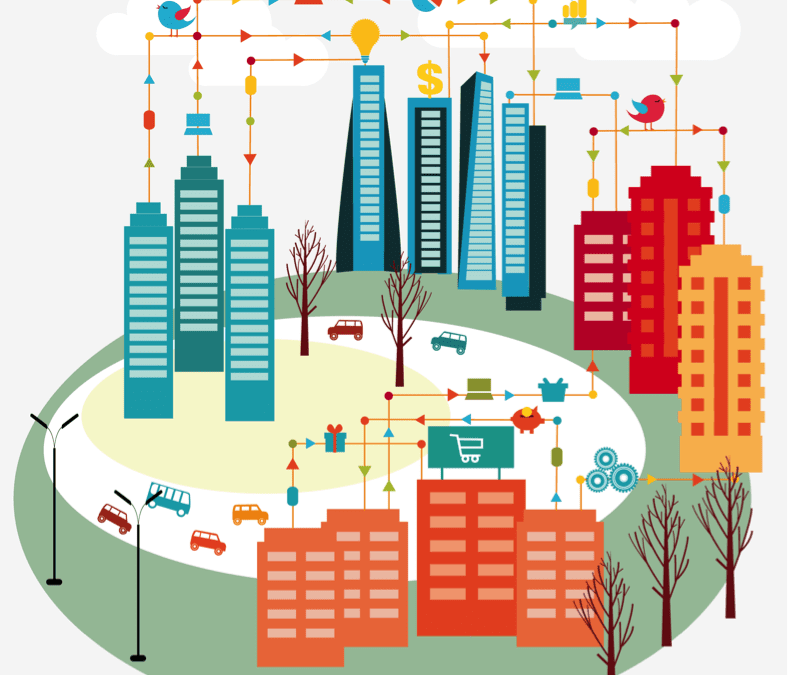This post was originally posted as a contribution to Oracle’s Eloqua blog.
The next computing revolution is upon us and it’s going to transform marketing as we know it. The ‘Internet of Things,’ or capability to connect traditionally unconnected things, (and their data streams) means that omnichannel is only growing more omnipresent. By moving offline objects and experiences online, marketers now have the capacity to understand customer behavior and journeys better than ever before. Yet, this capacity is contingent on a robust marketing attribution strategy lightyears ahead of where most businesses are today. The impact IoT will have on marketing attribution can’t be understated— the amount of consumer data emerging platforms, touchscreens, connected products, wearables, sensors, etc. will generate eclipses today’s standard.
It’s Time for Marketing Attribution to Up its Game
With the advent of social and mobile, most digital marketers are able to track multiple channels, mobile platforms, and email touches today, but in reality, these touchpoints still only account for a small percentage of actual customer-brand interactions. Arguably the vast majority of customer behavior, nevermind the chronology of it, remains a mystery to brand marketers. A survey of 700 companies showed that just 54% of businesses carry out any form of attribution; and just a third companies incorporate any offline touchpoints. Even some of the biggest brands in the world are limited to ‘last touch’ attribution capabilities, meaning they are only able to attribute a conversion or other intended outcome to the last recorded interaction (e.g. an email landing page).
But, marketers and consumers alike know this is not reflective of reality. Digital has empowered consumers with unprecedented access to information, resources, likeminded buyers, purchasing options, channels, etc. In reality, customers have rich and complex paths to purchase, driven by market and social influences, product experiences, branding elements, digital and in-store experiences, and more.
The Proliferation of Consumer Touchpoints only Complicates the Picture
With the ability to connect a data stream to… anything, comes a myriad of potential applications for dialog between consumer and brand at a personalized level. These dialogs may be explicit, when the consumer communicates directly with the brand, akin to dialing a support number of tweeting at a brand, or implicit, wherein brands monitor customer or product behavior for insights and incidents, but do so invisibly to the customer. The following image illustrates the proliferation of emerging touchpoints marketers must take into consideration when applying holistic marketing attribution across any point along the customer journey.
When we think about this longtail (and growing) list of emerging technologies, the number of ways one: customers can interact with brands, and two: brands can monitor those interactions chronologically, and in conjunction with other data sets, we can begin to gain a sense of the exponentially greater complexity (and opportunity!) facing marketing attribution as we know it.
Connecting the Offline World Will Create a New Measurement Paradigm
Robust and holistic attribution relies on comprehensive metrics and measurement techniques. The way consumers interact with mobile, wearables, connected devices, digital signage, touchscreens, sensors, etc. will not fit into existing measurement approaches. “Just like social has spawned its own sub-industry of metrics, analytics, and management, so too must the connected world,” articulates Jordan Holberg, Director of Technology at TBWA/Chiat/Day New York. This is an important concept for marketers to understand as they plan their digital strategies to incorporate emerging touchpoints because how success and engagement are measured are ultimately what determine the utility of the data to inform optimization.
Rethink Customer Experience with a Lens for Marketing Attribution
As the Internet of Things, and connectivity in general, drive consumers to bring more of their physical lives to the digital world, brands face two big challenges. One—figuring out how to track, monitor, and make sense of the ensuing troves of data, outlined above— and two: finding ways to stay relevant not only in the digital world, but in the physical world as well. “Real-world behaviors will become the new click-stream, purchase path, cookie, and search term,” explains Amy Lanigan, VP of Client Strategy at Fluid. Just as media has converged (paid, owned, and earned), online and offline engagement is now converging.
The insights generated from both online and offline interactions grant brands unprecedented capabilities to personalize customer experiences. But the more devices and parts of our lives that are connected, the higher potential for not just delight, but friction and frustration. So much data ushers in the risk for the dreaded culturally sensitive (and varying) privacy-violating creep-factor. Consumer opt-in will have to expand beyond CRM; consumers’ control of their own data is important and connected devices make the way that data is used more obvious and immediate.
Plan for Evolution by Designing for Value
As marketers continue to re-assess their attribution strategies, they must also consider: consumer expectations are evolving rapidly. What today may seem little more than sexy or novel, futuristic platforms, may quickly become the baseline of tomorrow. Predictive analytics, privacy-conscious personalization, and generally more intimate brand and product engagement will become the new default. It is never too early to pilot new ways to engage customers. Design for simplicity, dialog, how success will be measured, and ultimately how these emerging touchpoints can drive simultaneous value (e.g. intelligence, ease, convenience, etc.) for both consumer and business at once. The engagement numbers, the clickpaths (touchpaths?), referrals, and the conversions will follow suit.



